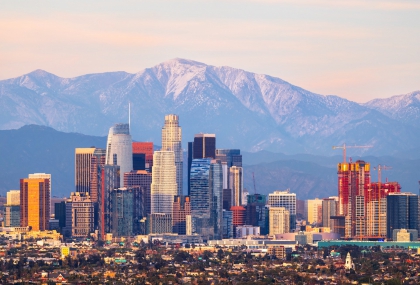
During the HLPF in New York in July 2019, the city of Los Angeles reported to the world on its progress to reach the Sustainable Development Goals (SDGs). Their Voluntary Local Review touched upon their so-called “L.A.’s Green New Deal”, which is a global model for local actions to address the climate crisis, and a potential good practice for other cities.
Principles and objectives of the Green New Deal
The principles of the Green New Deal are:
- A commitment to the Paris Climate Agreement and to act urgently with a scientifically-driven strategy for achieving a zero carbon grid, zero carbon transportation, zero carbon buildings, zero waste, and zero wasted water.
- A responsibility to deliver environmental justice and equity through an inclusive economy, producing results at the community level, guided by communities themselves.
- A duty to ensure that every citizen from Los Angeles has the ability to join the green economy, creating pipelines to good paying, green jobs and a just transition in a changing work environment.
- A resolve to demonstrate the art of the possible and lead the way to drive change.
The Deal’s objectives include achieving carbon neutrality and zero waste sent to landfills by 2050, and 100% renewable energy by 2045. Besides they want to recycle 100% of wastewater by 2035 and source 70% of all wastewater locally by 2035. Lastly they want to have planted 90,000 trees by 2021.
Setting up governing bodies to achieve the Deal
In order to achieve the Deal, the Mayor of Los Angeles, Eric Garcetti, is establishing two new implementation bodies:
1. Climate Emergency Commission (CEC) and an Office of the Climate Emergency Mobilization Director (CEMD): The CEC will be comprised of representatives from disadvantaged communities, indigenous local tribes, small businesses, and labor, as well as policy and science experts and City department senior executives. Jointly, the CEC and CEMD will engage local communities more deliberately around L.A.’s Green New Deal through community assemblies, particularly those who are most vulnerable to climate change and major shifts in our economy
2. Jobs Cabinet: This cabinet will serve as both an advisory body and a task force on job creation, training, and just transition, with a primary focus on green jobs at the outset. This cabinet, will identify gaps in the size, skills, and equitability of the workforce; identify strategies to close those gaps; and develop pathways for implementation of those strategies through new and existing programs, partnerships, and policies.
More information: Green New Deal
Source: SDG Knowledge Hub
